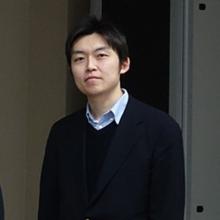
Transcription is a process in which an RNA sequence (of bases of 4 types \(A\), \(C\), \(G\), \(U\)) is synthesized from a DNA template sequence (of \(A\), \(C\), \(G\), \(T\)) according to the loss-less mapping \(A \to U\), \(C \to G\), \(G \to C\), and \(T \to A\). The resulting RNA sequence, called transcript, folds upon itself while being transcribed. This co-transcriptional folding (CF) is driven primarily by having helices form between complementary domains (factors), which bind with each other in the anti-parallel manner via base pairs \(A-U\), \(C-G\), and \(G-U\) and then twist, and secondly by having helices stacked coaxially. This platform has proven programmable in vitro by Geary, Rothemund, and Andersen; indeed, they demonstrated how to program a quasi-planar rectangular RNA tile into a transcript (in fact, into its DNA template) and a single CF-pathway any other of which is hardly taken, guaranteeing a high success rate.
This “Hello World” program has brought up the following two problems among others:
- How can we program a computation on this platform, that is, how to design a transcript that accommodates multiple CF-pathways and takes one of them depending on an input and what has folded so far?
- How can we maximize success rate by choosing a CF-pathway properly?
This talk will devote its first half to motivating these problems by providing background information on molecular programming, and particularly on helix-based RNA structures such as hairpin and pseudoknot, coaxial stacking among them, CF-kinetics, and RNA triple (not double) helix. Its second half is on programming of a Turing-universal computation on this platform by using a model of CF-driven computation called oritatami.